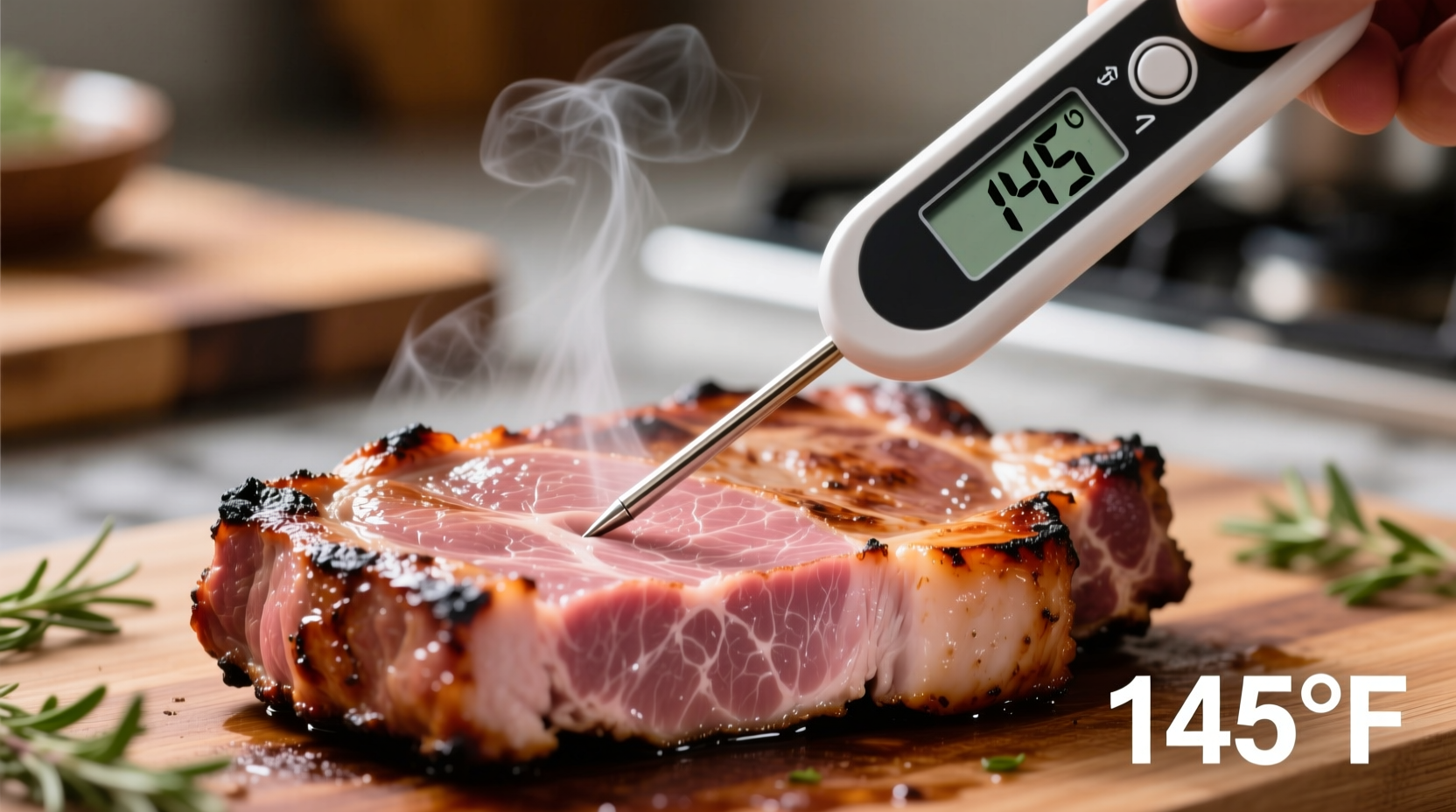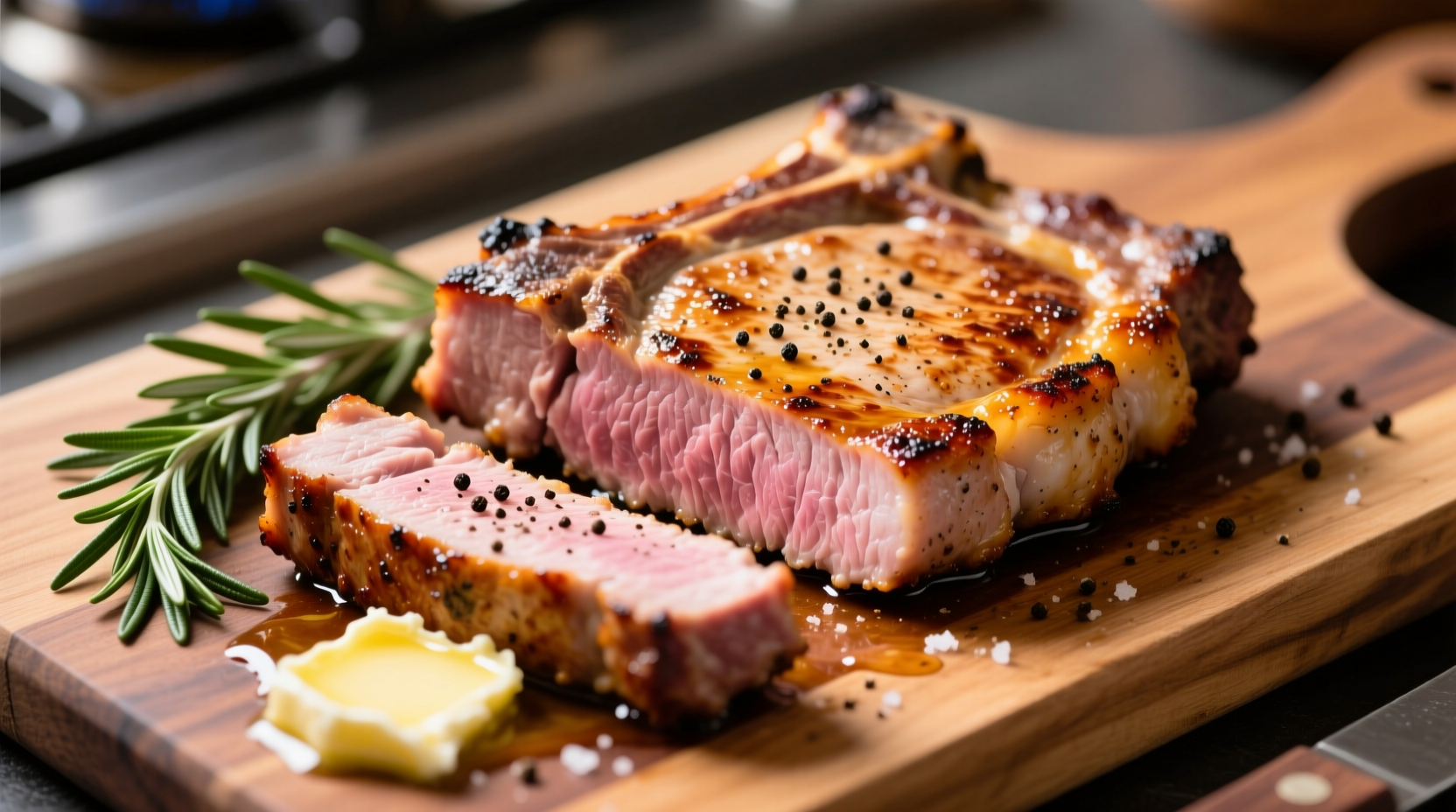Ever wondered why your pork chops turn out dry or you're unsure if they're safe to eat? Getting the temperature right isn't just about doneness—it's about food safety, texture, and flavor. As a home cook, knowing the precise temperature transforms your pork chop game from questionable to restaurant-quality.
The Science Behind Pork Chop Temperatures
Understanding the relationship between temperature and pork safety is crucial. For decades, conventional wisdom dictated cooking pork to 160°F, but modern food safety practices have evolved. The USDA updated its guidelines based on extensive research showing that 145°F with a 3-minute rest time effectively destroys harmful pathogens while preserving moisture.
When pork reaches 145°F, the meat's proteins have denatured sufficiently to eliminate Trichinella spiralis and other potential pathogens. The subsequent rest period allows residual heat to continue the cooking process slightly while letting juices redistribute throughout the chop.
| Temperature Range | Doneness Level | Texture & Appearance |
|---|---|---|
| 120-125°F | Rare | Very soft, bright red center (not recommended for pork) |
| 130-135°F | Medium-rare | Warm red center, slightly springy (not recommended) |
| 145°F + 3-min rest | Medium | Slightly pink center, tender and juicy (USDA safe) |
| 150-155°F | Medium-well | Small amount of pink, firmer texture |
| 160°F+ | Well-done | No pink, often dry and tough |
Why 145°F Is the Sweet Spot
The evolution of pork safety standards reflects improvements in farming practices and food handling. According to the USDA Food Safety and Inspection Service, modern pork production methods have virtually eliminated trichinosis concerns that previously required higher cooking temperatures. Their research confirmed that 145°F with a 3-minute rest achieves the same safety as the older 160°F standard while preserving optimal texture.
Many home cooks still overcook pork chops due to outdated information, resulting in dry, tough meat. The reality? Slightly pink pork at 145°F is not only safe but delivers superior eating quality. This temperature allows the intramuscular fat to render properly without squeezing out all the natural juices.
Your Step-by-Step Temperature Guide
Follow these professional techniques to achieve perfect pork chops every time:
1. Select the Right Thermometer
Digital instant-read thermometers provide the most accurate results for thin cuts like pork chops. Insert the probe into the thickest part of the chop, avoiding bone or fat pockets which give false readings. The USDA recommends using thermometers calibrated to within 2°F accuracy for food safety.
2. Cooking Methods and Temperature Management
Regardless of your cooking method (pan-searing, grilling, or oven-baking), temperature control remains consistent:
- Preheat your cooking surface to 375-400°F for proper searing
- Cook until thermometer reads 140°F, then remove from heat
- Rest for 3 minutes before serving (temperature will rise to 145°F)
The resting period is non-negotiable—this allows the muscle fibers to relax and reabsorb juices that would otherwise spill out when cut.

3. Troubleshooting Common Temperature Issues
Even with the right target temperature, challenges arise. Here's how to handle them:
- Inconsistent thickness: Butterfly thicker chops or use the "tenting" technique with foil on thinner edges
- Carryover cooking: Remember that temperature rises 5-10°F after removal from heat
- Grill hot spots: Create temperature zones on your grill for precise control
Avoid These Temperature Mistakes
Based on culinary research from the American Meat Science Association, these common errors compromise both safety and quality:
- Guessing doneness by color or touch alone (only thermometers provide accuracy)
- Cutting into chops to check doneness (releases precious juices)
- Skipping the rest period (results in 20% more juice loss)
- Using the same thermometer for raw and cooked meat without sanitizing
Professional kitchens follow the "two-touch" rule: insert the thermometer once when you suspect the chop is near target temperature, then remove it immediately. Multiple insertions create channels for juice loss.
Special Considerations for Different Pork Chop Types
While 145°F applies universally, different cuts require nuanced approaches:
- Bone-in chops: Insert thermometer parallel to bone in thickest meat section
- Frozen chops: Add 50% more cooking time but maintain same target temperature
- Marinated chops: Pat dry before cooking for proper searing
- Thick-cut chops (1.5+ inches): Sear then finish in 350°F oven
For food safety, never partially cook pork then refrigerate to finish later. The USDA Food Safety and Inspection Service emphasizes that partially cooked pork may not reach temperatures sufficient to destroy pathogens.
Putting It All Together: Your Perfect Pork Chop Checklist
- Bring chops to room temperature (20-30 minutes)
- Season and pat dry thoroughly
- Preheat cooking surface to 375-400°F
- Cook until internal temperature reaches 140°F
- Transfer to resting surface (not cutting board)
- Rest for exactly 3 minutes
- Verify final temperature is 145°F
- Serve immediately
Following this process consistently yields pork chops with a delicate pink center, juicy texture, and complete food safety assurance. Remember that carryover cooking continues during the rest period, so removing chops at 140°F prevents overshooting your target.
Frequently Asked Questions
Can pork chops be pink and still be safe to eat?
Yes, pork chops can be slightly pink at the recommended 145°F internal temperature and still be completely safe. The USDA confirms that color is not a reliable indicator of doneness—only a thermometer provides accurate safety verification.
Why did the USDA lower the recommended pork cooking temperature?
The USDA updated its guidelines from 160°F to 145°F with a 3-minute rest based on improved farming practices and scientific research showing this temperature effectively destroys pathogens while preserving quality. Modern pork production methods have virtually eliminated historical food safety concerns.
How do I check the temperature of thin pork chops?
For thin pork chops (under 1 inch), insert the thermometer sideways through the edge to reach the center. Digital instant-read thermometers work best for thin cuts. Check multiple spots if the chop has uneven thickness.
What happens if I cook pork chops to 160°F instead of 145°F?
Cooking pork chops to 160°F will make them safe to eat but often results in dry, tough meat. At this higher temperature, more moisture evaporates and proteins tighten excessively. The 15-degree difference between 145°F and 160°F significantly impacts juiciness and tenderness.
Do I need to adjust cooking temperature for bone-in pork chops?
The target internal temperature remains 145°F regardless of bone presence. However, bone-in chops may require slightly longer cooking time as the bone affects heat distribution. Insert the thermometer into the thickest part of the meat, parallel to the bone, for accurate reading.











 浙公网安备
33010002000092号
浙公网安备
33010002000092号 浙B2-20120091-4
浙B2-20120091-4